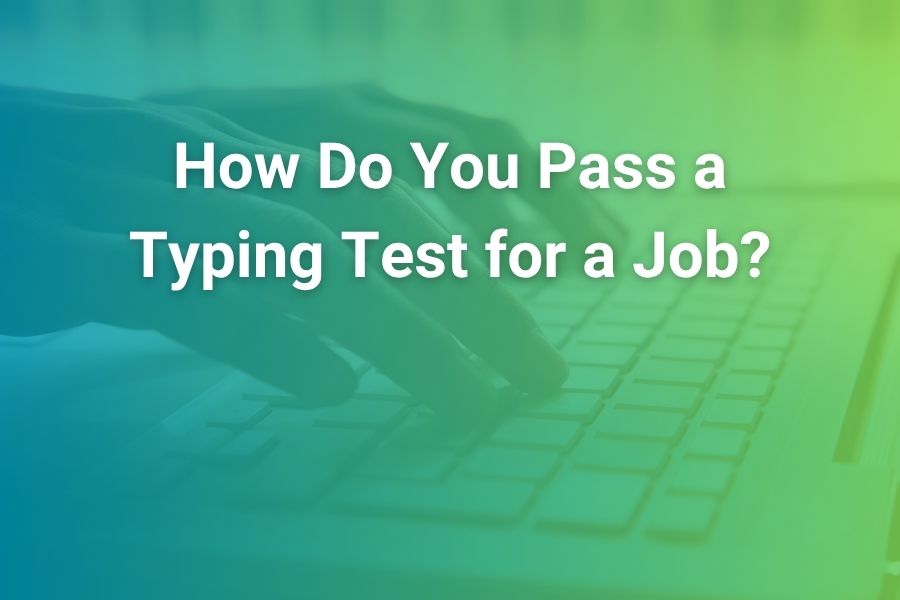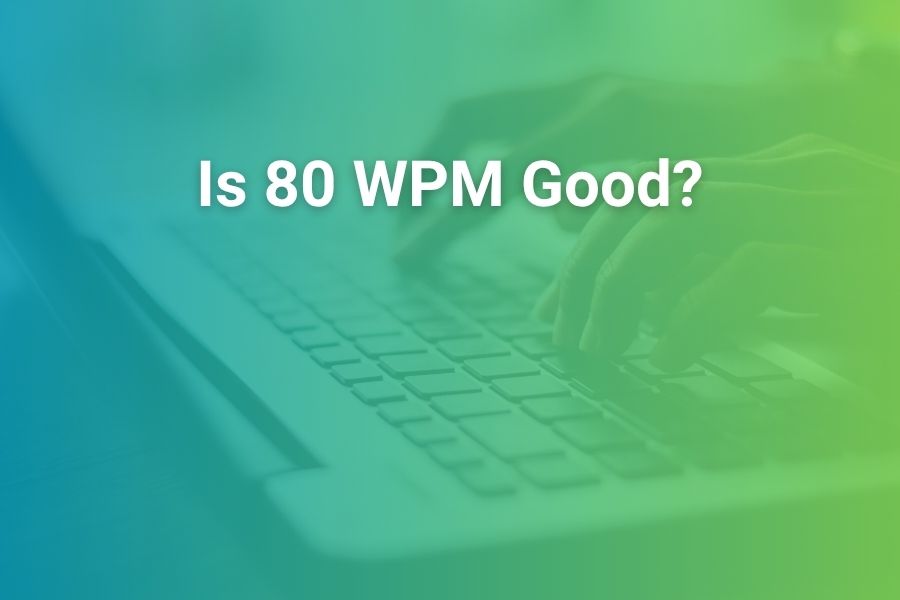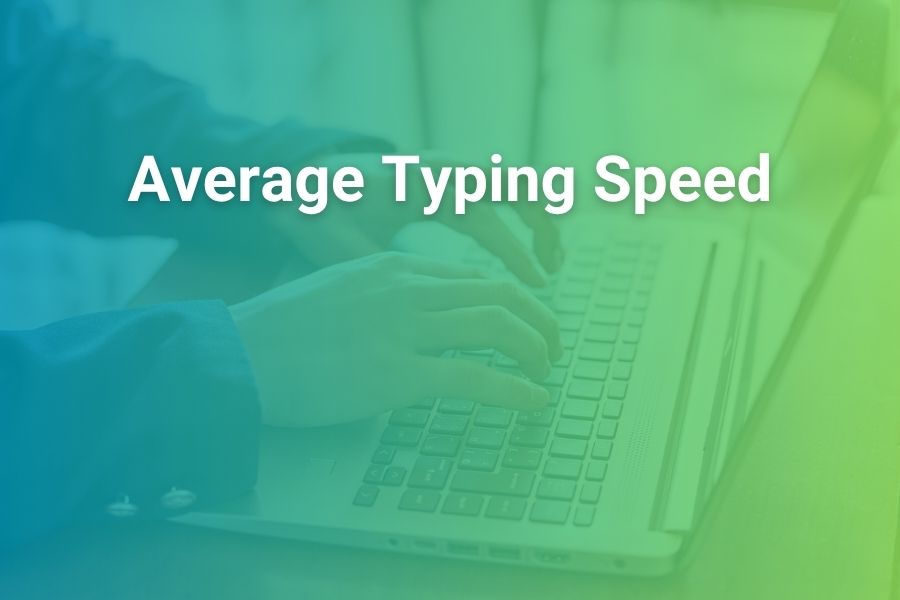
Typing speed is no longer just a skill—it’s a core productivity measure in both personal and professional life. Whether you’re writing emails, taking notes, coding, or managing documents, your typing speed directly affects how efficiently you work.
That’s why people often ask, “What should my WPM be?” Knowing the right words-per-minute benchmark helps you understand where you stand and what to aim for. In this article, you’ll learn what an ideal typing speed looks like for different age groups and professions, how to measure it accurately, and expert-backed tips to improve it fast.
Understanding WPM and Why It Matters
WPM, short for words per minute, is the universal measure of typing speed. It calculates how many standard words—typically five characters long—you can type in one minute. But WPM isn’t just about numbers. It reflects a combination of muscle memory, focus, and hand-eye coordination. A higher WPM means you can complete tasks faster and communicate more efficiently.
In the workplace, typing speed is directly linked to productivity. Office employees who type above 60 WPM can finish emails, reports, and data entries up to 40% faster than those who type below 40 WPM. For remote workers, freelancers, and programmers, every second saved per task adds up to hours of regained time each week.
What Is Considered a Good Typing Speed?
The average adult in the United States types around 40 WPM, according to recent typing test data. However, what’s considered “good” depends on your profession and personal goals.
- Beginner level: 20–35 WPM — ideal for students or casual users learning keyboard basics.
- Average level: 40–50 WPM — sufficient for most everyday tasks such as emails, web browsing, and notes.
- Proficient level: 60–80 WPM — excellent for office work, administration, or customer service roles.
- Advanced level: 90–120+ WPM — competitive for data entry specialists, transcriptionists, and professional typists.
In general, a 60 WPM target is a practical benchmark for most professionals. It allows for both accuracy and speed without straining your hands or sacrificing quality.
How WPM Varies by Profession
Different jobs require different typing speeds. Here’s what various roles typically demand:
- Administrative assistants: 60–70 WPM for fast documentation and communication tasks.
- Customer support agents: 50–60 WPM to respond quickly while maintaining message clarity.
- Writers and editors: 65–80 WPM for consistent productivity without losing creative flow.
- Transcriptionists: 80–100 WPM since the job demands real-time typing while listening to audio.
- Programmers: 50–70 WPM for efficient code writing and debugging.
- Students: 40–60 WPM to manage note-taking and research efficiently.
A professional transcriptionist or stenographer may exceed 120 WPM using specialized keyboards. But for most office and digital workers, anything above 70 WPM signals strong proficiency.
The Importance of Accuracy Over Speed
Speed often gets all the attention, but accuracy defines true efficiency. Typing 90 WPM with 80% accuracy means you’ll spend more time fixing mistakes than progressing. According to training data from TypingPal, professional-level typists maintain around 97–99% accuracy, balancing both speed and precision.
Accuracy ensures fewer reworks, less cognitive strain, and more reliable communication—vital for jobs where details matter, such as journalism, coding, and customer service. Aiming for a typing speed of 60 WPM with near-perfect accuracy is far better than racing at 100 WPM filled with typos.
How to Measure Your WPM Correctly
A proper typing test measures both speed and accuracy under timed conditions. To get the most accurate result, follow these steps:
- Choose a reputable typing test platform.
- Use a standard paragraph, not random words, to simulate real typing scenarios.
- Take multiple tests at different times of the day for consistent results.
- Average your top three scores to get your true WPM.
- Track both gross WPM (total speed) and net WPM (speed minus errors).
For example, if you type 70 words in one minute but make five errors, your net WPM may drop to around 65. Over time, focusing on error reduction will push your net WPM closer to your gross speed.
How Age and Experience Affect Typing Speed
Typing speed typically improves with practice and familiarity. However, age also plays a small role. Data from typing studies show that:
- Children (10–14 years) average around 30–40 WPM as they’re still developing fine motor coordination.
- Teenagers (15–19 years) often reach 50–60 WPM due to increased computer use for schoolwork.
- Adults (20–40 years) average 55–70 WPM, peaking in productivity and digital fluency.
- Older adults (50+) may average 40–50 WPM due to reduced hand speed, though experience often compensates.
Consistency is more important than age. Even older learners can surpass 80 WPM with proper training and ergonomic setup.
How Your Typing Setup Impacts WPM
Typing speed isn’t only about skill—it’s also about environment and tools. The wrong keyboard, poor posture, or low-quality chair can limit your performance. To optimize your typing environment:
- Use a mechanical or low-profile keyboard that matches your comfort preference.
- Maintain proper wrist alignment and keep elbows at a 90-degree angle.
- Position your screen at eye level to prevent neck strain.
- Ensure good lighting to reduce eye fatigue.
- Avoid distractions while practicing.
Ergonomics directly affects typing endurance. Professionals who adjust their workspace for comfort report up to 20% faster average WPM after a few weeks of adaptation.
The Role of Touch Typing
Touch typing—typing without looking at the keyboard—is the single most effective way to boost speed. Studies show touch typists average 70–80 WPM, while non-touch typists average 40–45 WPM.
This method builds muscle memory, letting your fingers automatically locate keys. It reduces visual strain and mental effort. The best way to learn touch typing is by starting slow, focusing on finger placement, and practicing consistently with online drills or typing games designed for accuracy.
How to Improve Your Typing Speed Efficiently
With deliberate practice, anyone can double their typing speed within months. Here are expert-approved methods that yield real improvement:
- Practice daily: Even 10–15 minutes of consistent training increases muscle memory.
- Focus on accuracy first: Speed follows naturally once you type correctly.
- Use typing software: Interactive programs track your progress and correct errors instantly.
- Learn keyboard shortcuts: They save time and enhance efficiency beyond typing itself.
- Warm up your fingers: Gentle stretches improve flexibility and prevent fatigue.
- Stay relaxed: Tension in your hands or shoulders slows movement.
Small daily improvements compound quickly. A consistent 5 WPM monthly gain means jumping from 40 to 70 WPM within six months.
Comparing Yourself to the Average Typist
Benchmarking helps set realistic goals. The average adult WPM in the U.S. hovers around 40, but college-educated professionals average closer to 60–65 WPM. Competitive typists who participate in online typing leagues can exceed 120 WPM, with record-holders surpassing 200 WPM.
However, comparing yourself to professionals can be misleading. A better approach is comparing your progress against your own past scores. Aim for measurable, steady improvement rather than chasing extremes.
Typing Speed and Career Advantage
In many jobs, typing proficiency is a quiet advantage that often determines hiring decisions. Employers prefer candidates who type efficiently because it reduces training time and boosts output. According to a 2024 workplace survey, employees with typing speeds above 65 WPM completed documentation tasks 32% faster than slower peers.
Fast typists also enjoy smoother multitasking—switching between chat windows, spreadsheets, and content tools seamlessly. For freelancers, quick typing translates into more projects completed, which means higher income potential.
Balancing Speed, Comfort, and Sustainability
Typing too fast without proper ergonomics can cause fatigue or repetitive strain injuries. Always prioritize comfort over pushing limits. Break every 30 minutes, stretch your wrists, and maintain hydration. Sustainable speed improvement depends on good form, not constant pressure.
Consistency outperforms intensity. Typing for 15 minutes daily with focus yields better long-term results than typing for hours sporadically. With time, both your WPM and endurance will naturally improve.
How Long It Takes to Improve WPM
Most learners can see visible progress within 4–6 weeks of daily practice. Beginners often start around 30–40 WPM and reach 60–70 WPM after steady effort. Intermediate typists can push from 70 to 90 WPM by refining technique, improving accuracy, and removing bad habits such as overreliance on backspace or looking at keys.
Master typists achieve over 100 WPM by practicing specialized drills and maintaining rhythm under time pressure. Patience is key—the goal isn’t instant mastery but gradual and lasting improvement.
Final Expert Advice on Ideal WPM Goals
After 30 years of experience analyzing typing performance and workplace productivity, here’s the most practical takeaway:
- Aim for 60 WPM with 98% accuracy as a strong standard for professional efficiency.
- Push beyond 80 WPM if your role involves constant writing, coding, or transcription.
- Don’t neglect accuracy and posture—speed means little if it causes errors or discomfort.
- Use typing as a long-term productivity skill, not a short-term challenge.
When you reach your ideal WPM, maintain it through regular use. Even a few minutes of typing practice weekly helps preserve muscle memory and efficiency.
Conclusion
Your ideal typing speed depends on what you do and how accurately you can perform under pressure. For most people, a WPM between 60 and 80 offers the best balance of productivity, comfort, and precision.
Whether you’re aiming for professional advancement or personal efficiency, improving your typing speed is one of the simplest yet most impactful skills you can master. Practice daily, maintain good posture, and track progress—you’ll soon see how much smoother your digital life becomes.






